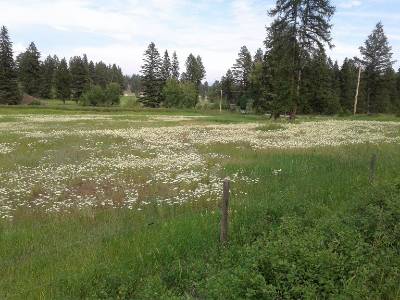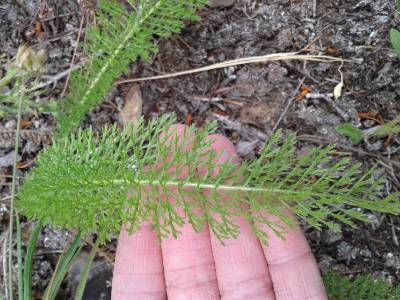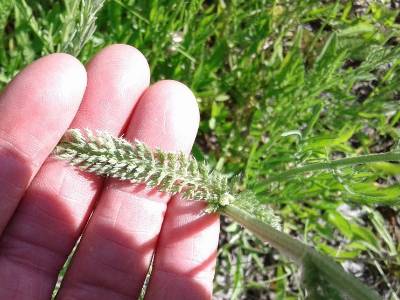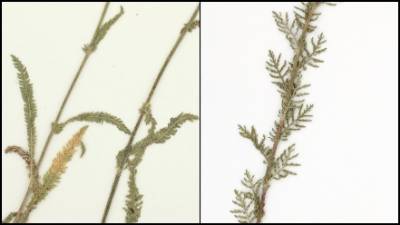Noble Yarrow (Achillea nobilis)
Download weed post on Noble Yarrow as a PDF (includes word puzzle)

Noble yarrow infestation in Flathehead County, MT. (Tris Hoffman)
Noble yarrow (Achillea nobilis) is a non-native perennial forb that was introduced to Montana more than 100 years ago. The Consortium of Pacific Northwest Herbaria lists 18 records of this plant, the first dated 1902. The majority of records are from 1980 through 2006, and all but one come from two counties in Montana (Flathead and Lake; the other record is from Shoshone County, ID). USDA Plants Database lists Phillips County in addition to Flathead and Lake; that database also shows one county in Minnesota and one county in New York with records of noble yarrow. There is limited information available on this species, but reports from Tris Hoffman with the Forest Service in the Flathead National Forest suggest it can exhibit invasive traits,

Noble yarrow leaf. (Tris Hoffman)

Western yarrow leaf. (Tris Hoffman)
spreading easily and being extremely versatile.
Noble yarrow often grows alongside western yarrow (Achillea millefolium) and may be easily mistaken for the native forb. The two differ in a couple ways. First, the leaves of noble yarrow are twice pinnately dissected, and the leaves of western yarrow are three times pinnately dissected. This translates to noble yarrow leaves appearing parsley-like while western yarrow leaves appear feather-like. Second, portions of the flowers of noble yarrow are smaller than those of western yarrow, but the differences in size are on the order of one to two millimeters so they are difficult to discern. Tris Hoffman describes noble yarrow as having more flower clusters per plant, but that can be influenced by growing conditions. Noble yarrow is generally not as drought-tolerant as western yarrow, therefore it may be more aggressive in areas that receive higher amounts of annual precipitation (e.g. Flathead and Lake Counties in Montana).

Western yarrow leaves (left) appear feathery while noble yarrow (right) leaves are parsley-like
Noble yarrow and western yarrow are good examples of closely related species, one of which is native and one of which is non-native, that can be easily confused with each other yet may display different patterns of growth depending on the environment. Another example from the Montana noxious weed list is that of Phragmites. In this case, the non-native sub-species is invasive while the native sub-species is not. Plant identification is challenging, but being aware of plant morphological traits and overall growth patterns can be helpful for distinguishing one species (or sub-species) from other and thereby fine tuning weed management efforts.
